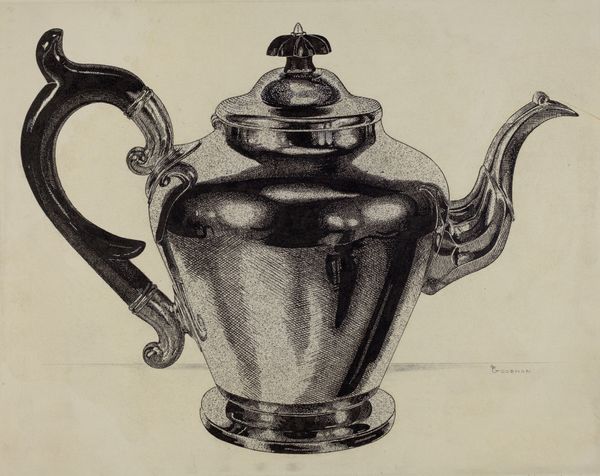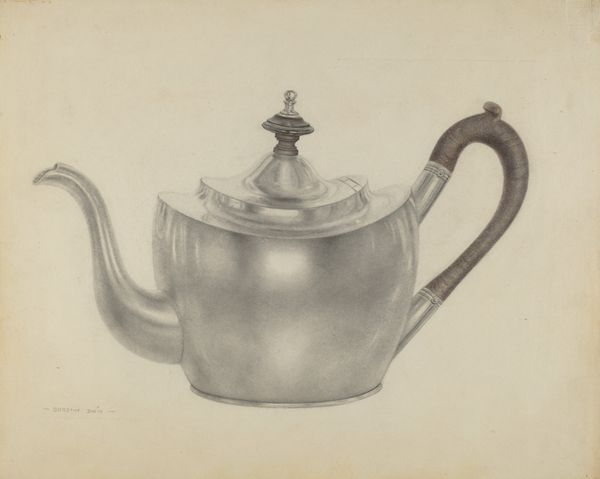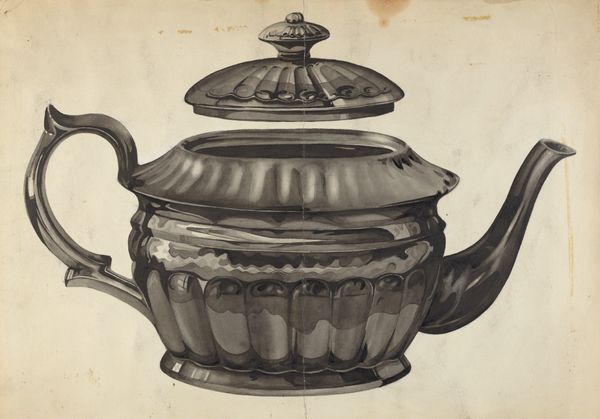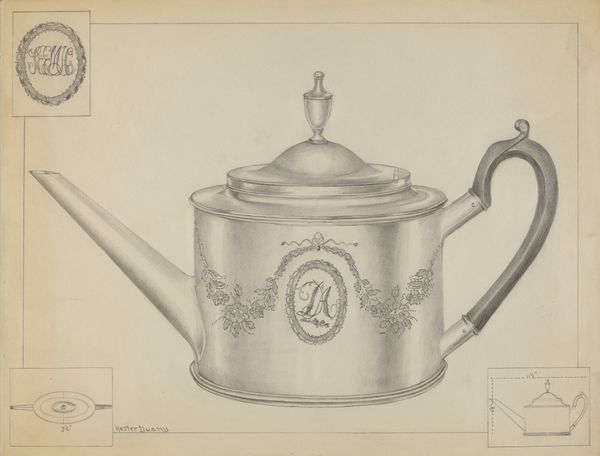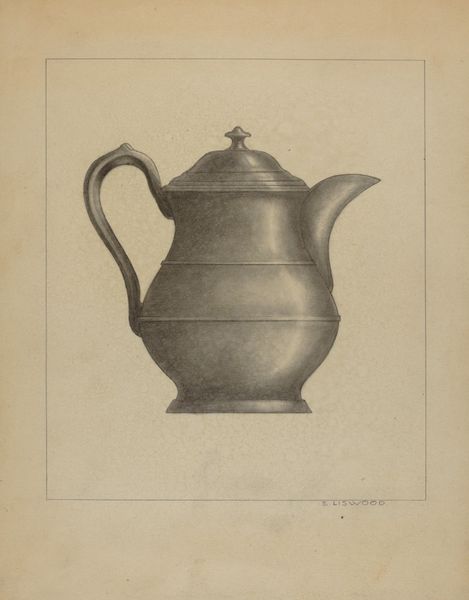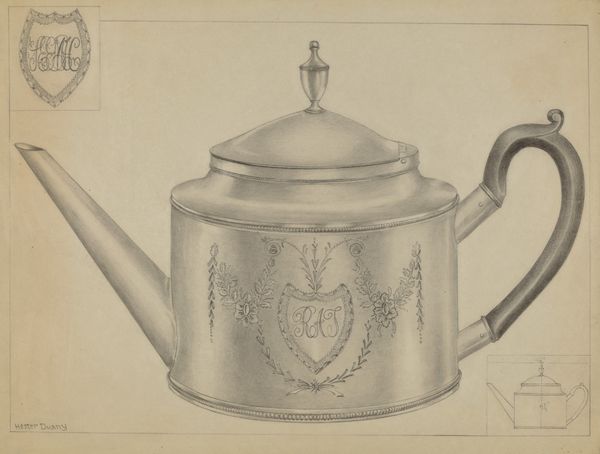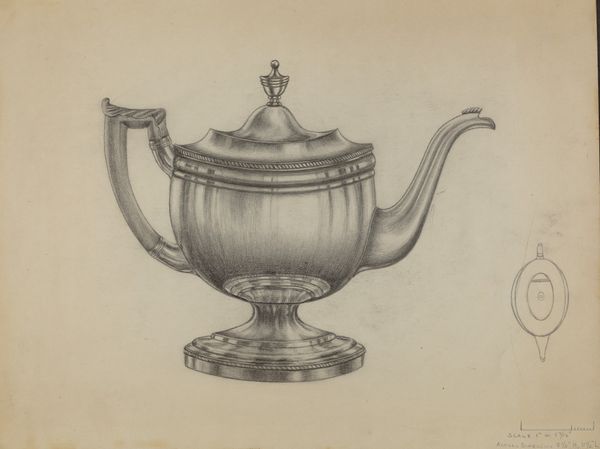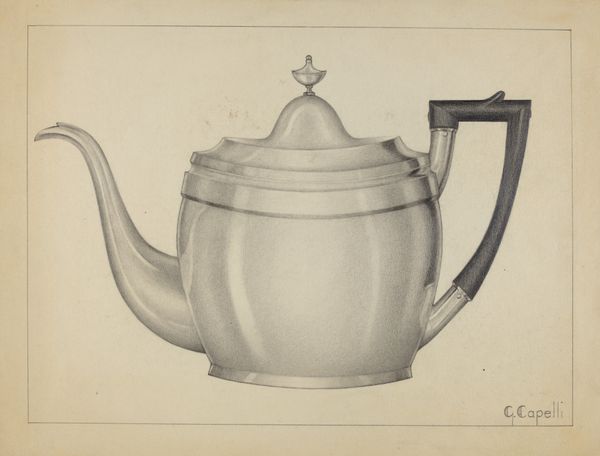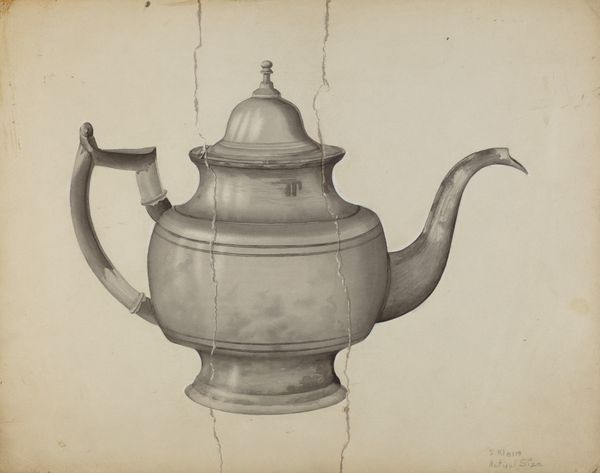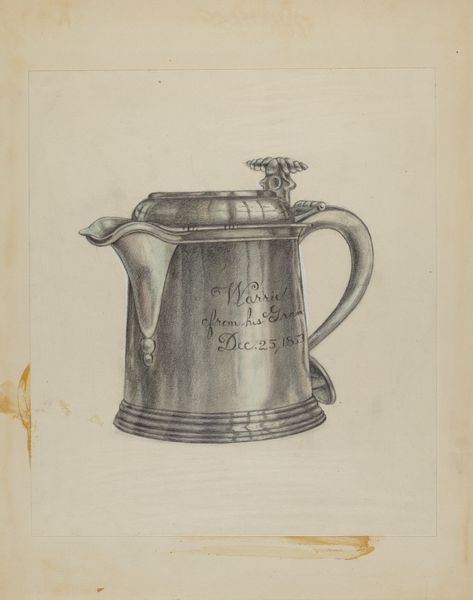
drawing, pencil
#
drawing
#
pencil
#
academic-art
Dimensions: overall: 23.1 x 30.5 cm (9 1/8 x 12 in.) Original IAD Object: 7 1/8" high
Copyright: National Gallery of Art: CC0 1.0
Curator: A pencil drawing of a silver teapot, dating between 1935 and 1942. It feels quite precise, almost technical, and given the detail, it's hard to believe it’s "just" a drawing. What strikes you about this piece? Editor: The incredible rendering of the silver itself – the artist really captured how light plays on its surface. Also, the inscription about wool? What's the connection between textiles and a teapot? Curator: The inscription offers a significant clue. Note how it cites New York's "Society for the Promotion of Useful Arts" awarding the piece to someone who produced "Second best Specimen of Woolen Cloth." It's 1813. We can hypothesize the teapot's silver reflects mercantile power in early America and served as an award to improve industrial output and wealth extraction. The material value intersects with social history and the labor involved in creating woolen cloth. Editor: So the value isn’t just aesthetic or functional, but it’s also about labor and a very specific historical moment. That makes me wonder about the drawing itself. Why create a drawing of the teapot in the 1930s-40s, much later? Was the artist thinking of a different social context by then? Curator: Excellent question. What does pencil as a medium suggest to you? Was this image perhaps used for documentation or for sale? Consider the labour of replicating such an elaborate form versus that of crafting the textile it commemorates. How do the 'high' and 'low' arts intertwine? Editor: I hadn't thought about comparing those efforts. It's almost like the drawing re-frames the story of labor behind it. Now I see the artwork drawing not just as a nice thing to look at but also as connected to a larger discussion on history, society and craft. Curator: Exactly. And understanding the role of material – silver, wool, pencil – allows us to explore its multi-layered context. A shift in perspective makes an ordinary teapot extraordinary, don't you think?
Comments
No comments
Be the first to comment and join the conversation on the ultimate creative platform.
